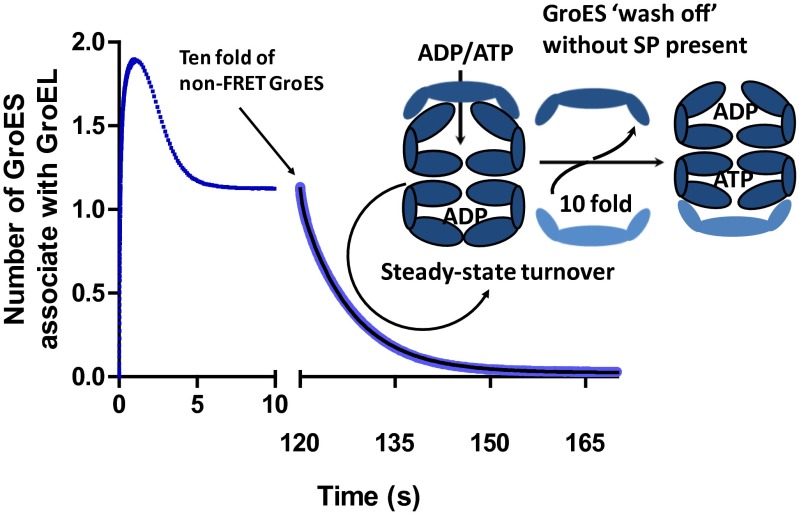Fig. 3.
Dynamics of the GroEL:GroES1 asymmetric and GroEL:ES2 symmetric complexes under turnover conditions. GroES wash out from the asymmetric GroEL:GroES1 complex. The plot combines two related FRET measurements. Both measurements include 2 μM FRET apo-GroEL and 3 μM FRET GroES mixture. The trajectory in the left section (blue) was initiated by mixing with 0.5 mM ATP and shows a similar transient as in Figs. 1 and 2. The right portion of the trajectory (light blue), however, was generated as follows: after addition of 0.5 mM ATP, the system was left turning over for 2 min (marked by the arrow) before 30 μM non-FRET GroES (dark blue) was added, displacing the FRET GroES and thus showing the kinetics of the turnover of the asymmetric complex. An ATP-regenerating system (0.4 mM PEP plus 10 U/mL pyruvate kinase) was included in both measurements. The GroES wash-off trace can be fitted with double-exponential equations: y = Amp1 × exp(−k1 × t) + Amp2 × exp(−k2 * t) + B, yielding two rate constants: 2.49 ± 0.06 s−1 (Amp, ∼7%) and 0.1265 ± 0.0003 s−1 (Amp, ∼93%). The latter is very close to the rate constant for the dissociation of ADP trans ring from the resting state asymmetric complex (4), whereas the former can be attributed to a small fraction of asymmetric complex in the acceptor state (no ADP release required before ATP-induced dissociation of the cis-bound GroES).

